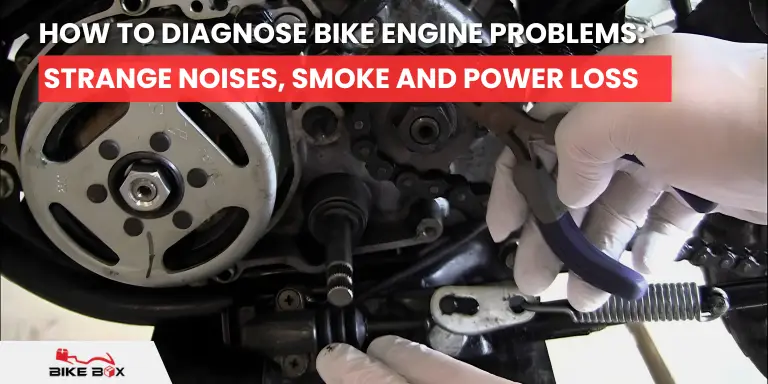Riding a motorcycle is pure freedom – the wind, the roar, the open road. But nothing kills that vibe faster than turning the key and… nothing. Or just that weak little “errrr… errrr…” sound. You know the one. You’re already late, standing there begging your bike: “Come on, baby, start for me!” We have all done.
Most of the time, the problem is simple. Your motorcycle battery is dying. Ignoring the early signs only makes it worse. And it will cost more.
What Does a Motorcycle Battery Actually Do?
It’s not just a box that makes the lights work. Your motorcycle battery does three critical jobs:
- Starts the engine (the big power draw)
- Stabilizes voltage for all the electronics (ECU, fuel injection, ABS, etc.)
- Power accessories when the engine is off (clock, alarm, GPS tracker)
Once the engine is running, the stator and regulator/rectifier take over charging. But if the battery is weak, the whole system struggles – even if the charging system is perfect.
For a complete guide to picking the perfect battery and improving your bike’s performance, check out the ultimate motorcycle battery guide 2025.
Signs Your Motorcycle Battery Needs Replacement
Here are 10 signs your battery needs replacing. Fix it before you end up pushing your bike home.
1. Slow Engine Crank
You hit the starter. Instead of a quick “VROOM,” it goes “rrrr… rrrr… rrrr.” That slow crank means the battery is too weak to start the motor. Takes more than 2–3 seconds to start? The battery is dying. Feels slower than last month? That’s a warning.
2. Dimming Headlights
Turn on the lights at idle and watch them. Do they dim dramatically when you rev the engine or when you hit the brake light? A healthy battery keeps everything bright and steady. Dimming means the battery can’t supply enough power and the charging system is struggling to keep up.
3. Clicking Sound When Starting
You press the starter. All you hear is “click-click-click.” Rapid clicking? The starter is trying. But the battery is too weak. Classic dead battery sign.
4. Battery Is Over 3 Years Old
Even if it “still works,” age matters. Most motorcycle batteries last 2–4 years, depending on climate and usage. If it’s over 3 years old, it’s near the end of its life. Replace it before it leaves you stranded.
5. Swollen or Leaking Battery Case
Take a quick look at the battery. Is the case puffed up like a balloon? Any acid leaks or white crusty stuff around the terminals? That’s dangerous. Heat and overcharging cause the case to swell and crack. If you see this, replace it immediately!
6. Frequent Jump-Starts
Once in a while is understandable. But if you’re jumping your bike every other week (or keeping cables in your tank bag “just in case”), stop fooling yourself. The battery is no longer holding a charge. You’re just delaying the inevitable.
7. Corroded Battery Terminals
Green or white fuzzy stuff on the battery terminals? That corrosion increases resistance and blocks proper charging. Clean it all you want. But if the battery is old, corrosion keeps coming back faster. A fresh battery usually solves this for years.
8. Dashboard or ECU Errors
Modern bikes throw all kinds of warning lights or error codes when the voltage drops too low. “Check engine,” random ABS warnings, or the clock resetting every time you start – these can all be caused by a failing battery messing with the bike’s electronics.
9. Battery Voltage Below 12.4V
Get a cheap multimeter. Every rider should have one. Fully charged battery = 12.6–12.8V. Below 12.4V? The battery isn’t holding a charge. Below 12.0V? It’s basically dead.
10. Unreliable Performance After Long Parked Periods
You left the bike for two weeks and now it won’t start – even though it was perfect before? Good batteries can sit for a month and still crank strong. Weak ones self-discharge quickly and give up the moment you need them most.
How to Confirm Your Battery Is the Problem
Before you spend money, rule out other issues:
- Charge the battery fully overnight with a proper motorcycle smart charger.
- Check the voltage the next morning – still above 12.6V? Good. Below 12.4V? Failing.
- Do a load test (any decent workshop or battery shop can do this in 30 seconds).
- Check your bike’s charging. When the engine is idling, the battery should read 13.8–14.8 volts. Lower than that? The charging system may have a problem.
If the battery fails the load test or won’t hold a charge, it’s time for a new one. And when that time comes, always go for original spare parts. Cheap copies die fast in our heat and can even damage your bike’s charging system.
Final Resolution
Don’t wait for an awkward moment. Your bike could fail in a crowded market. Or on a late-night ride home. Be ready before it happens. A dead battery always fails at the worst possible time.
Look for the signs. Test your battery. Replace it as soon as you see trouble. Your bike will thank you.
Ready for a fresh battery that actually lasts? Head over to Bikebox Mt right now and buy original spare parts that keep you riding without worry. Because nothing feels better than twisting the throttle knowing your bike will fire up every single time.
Ride safe, ride strong!
FAQs
How long does a motorcycle battery last?
Most motorcycle batteries last 2–4 years. But extreme heat or heavy use can make them die much sooner.
What does a swollen or leaking battery indicate?
This is dangerous. It usually means heat damage or overcharging. Replace the battery right away.
Can corroded battery terminals affect my bike’s performance?
Yes. Corrosion stops the battery from charging properly. It can cause hard starting and random electrical issues.
What voltage shows that a motorcycle battery needs replacement?
Below 12.4V means the battery is getting weak. Below 12.0V means it’s basically dead.
Why does my bike fail after being parked for a few weeks?
Weak batteries lose charge fast. If the bike sits for a while, it often won’t start the engine.





